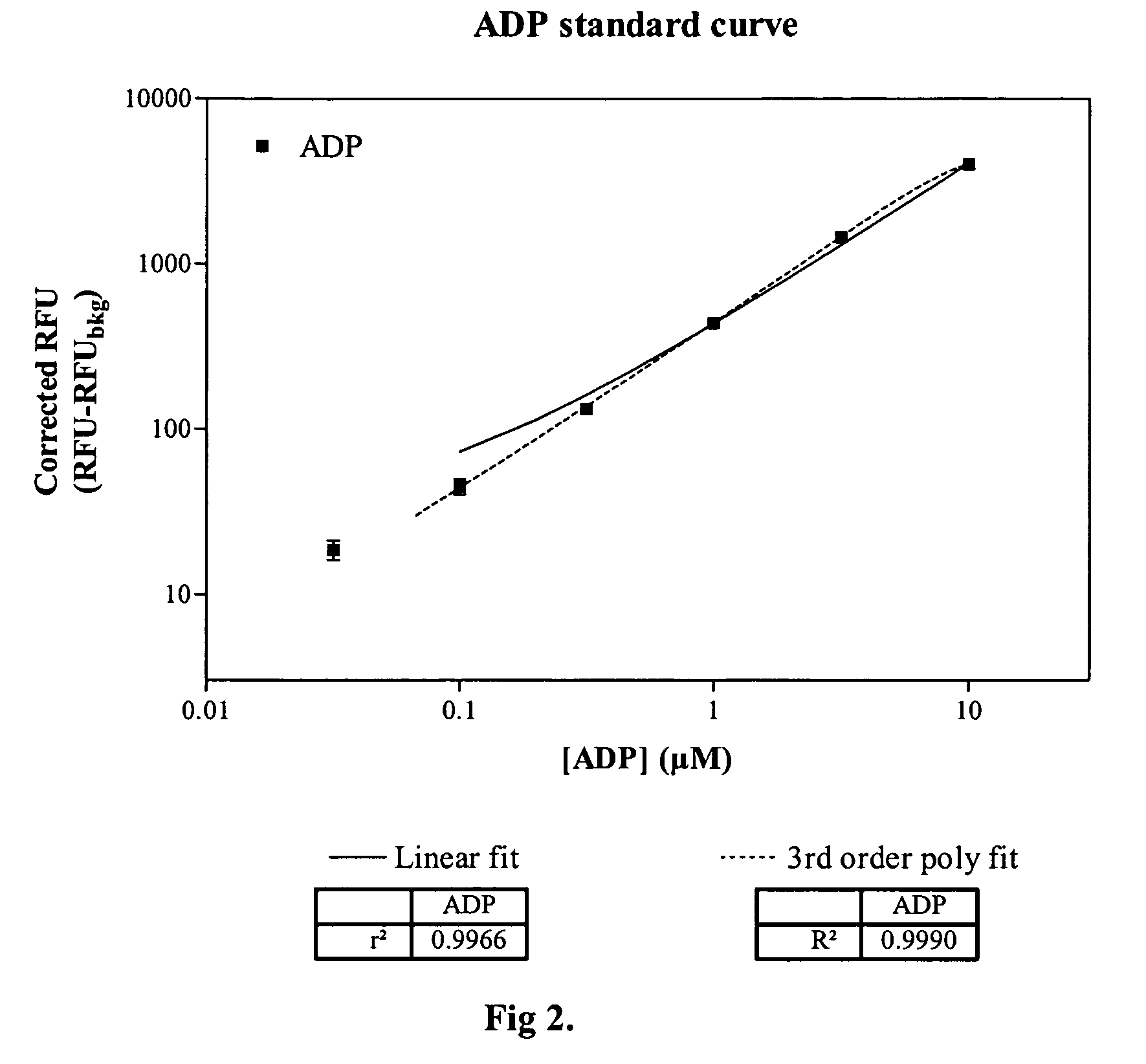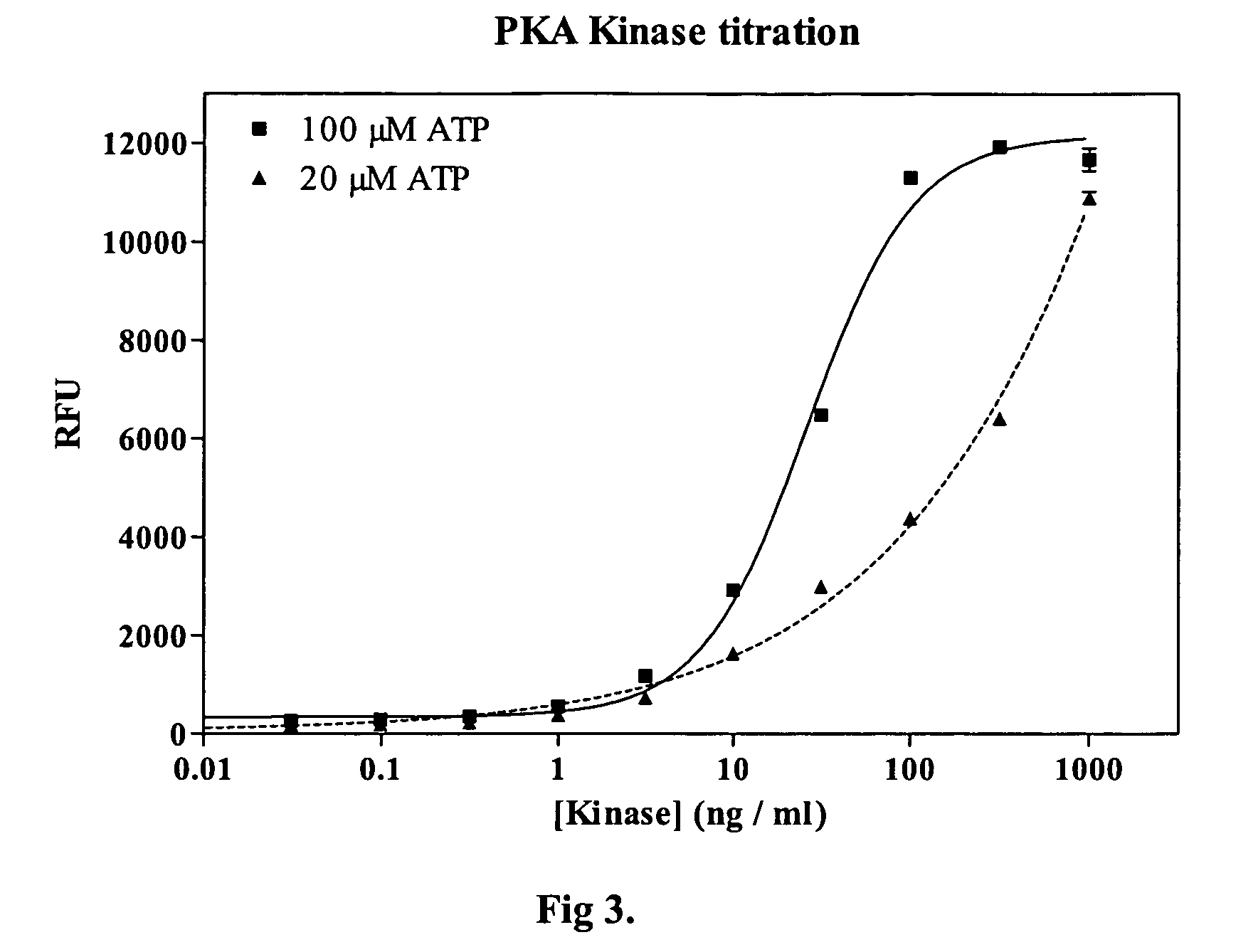ADP detection using an enzyme-coupled reaction
a technology of enzyme-coupled reaction and detection method, which is applied in the field of detection of adp presence and formation of assays, can solve the problems of varying degrees of contamination of atp, contaminated buffers and assay components, and contamination of various materials, so as to minimize accidental contamination
- Summary
- Abstract
- Description
- Claims
- Application Information
AI Technical Summary
Benefits of technology
Problems solved by technology
Method used
Image
Examples
Embodiment Construction
Overview
[0021]Methods and compositions are provided for improved detection of ADP (adenosine diphosphate) by eliminating interfering assay components. Of particular interest are assays that use an enzyme-coupled reaction to produce a signal related to the amount of ADP present in the assay medium. The method employs forming pyruvate from ADP using pyruvate kinase and phosphoenolpyruvate, oxidizing the pyruvate with pyruvate oxidase to give hydrogen peroxide and then detecting the peroxide by any convenient means as a determination of the amount of ADP.
[0022]The method employs correcting components that serve to reduce adventitious contributors to erroneous results. The adventitious contributors result from normal processes of hydrolysis, oxidation, and the like to produce intermediates involved in the determination of ADP that result from other than the ADP produced as a result of the event of interest. Of particular concern are ADP resulting from the hydrolysis of ATP, pyruvate res...
PUM
| Property | Measurement | Unit |
|---|---|---|
| time | aaaaa | aaaaa |
| time | aaaaa | aaaaa |
| volumes | aaaaa | aaaaa |
Abstract
Description
Claims
Application Information
 Login to View More
Login to View More - R&D
- Intellectual Property
- Life Sciences
- Materials
- Tech Scout
- Unparalleled Data Quality
- Higher Quality Content
- 60% Fewer Hallucinations
Browse by: Latest US Patents, China's latest patents, Technical Efficacy Thesaurus, Application Domain, Technology Topic, Popular Technical Reports.
© 2025 PatSnap. All rights reserved.Legal|Privacy policy|Modern Slavery Act Transparency Statement|Sitemap|About US| Contact US: help@patsnap.com



